Clancy Tucker's Blog, page 151
June 1, 2018
2 June 2018 - THE GRIZZLY BEAR
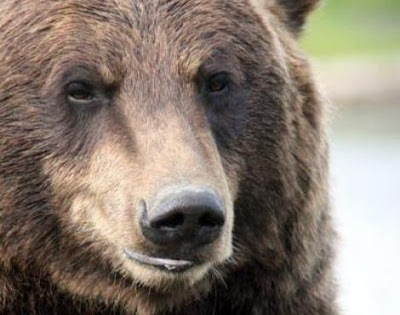
THE GRIZZLY BEAR
G'day folks,
Welcome to some facts about an animal I'd like to observe and photograph.
The grizzly bearis a sub-species of the brown bear, also known as the Silvertip Bear. The grizzly bearslive in the uplands of western North America, and each female bearproduces a litter of young roughly every other year.
Grizzly bearscan often be seen to congregate together around streams in the salmon season to get the best catch. The grizzly bearis generally a solitary mammal.
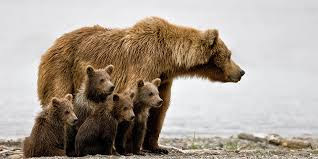
It is estimated that less than 10% of grizzly bearsmake it into full adulthood. While the grizzly bearhas no natural predators, the bearshave been hunted by humansalmost to extinction.
The grizzly bearhas a bad reputation amongst humansand animalsalike, as the grizzly bearis known to be aggressive and very territorial. Due to the grizzly bearssize, there are no known North American mammalsthat would naturally preyon the grizzly bear, making the grizzly bearan extremely dominant predator.
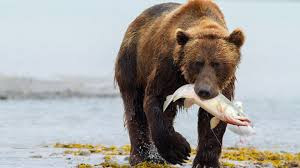
Female grizzly bearsthat have grizzly bearcubs will often be extremely wary of other animalsand the grizzly bearmother will often keep her grizzly bearcubs in quieter areas until the grizzly bearcubs are old enough and big enough to defend themselves, at which point the grizzly bearcubs will generally venture away from their grizzly bearmother in orderto begin a life of roaming themselves. The grizzly bearmothers however are incredibly protective of their young and will generally always attack any animalthat she believes is a danger to her young family.
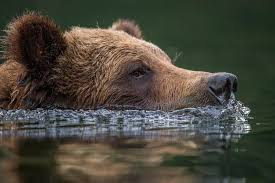
Male grizzly bearscan grow to a height of more than 3 meters tall when standing on their hind legs, with female grizzly bearsbeing around 40% smaller. As with the brown bear(from which the grizzly bearis thought to have come from), the grizzly bearhas a humped look at the top of the grizzly bearsback, which is the build of the enormous muscle that provides the bearswith the strength they need, mainly when digging.
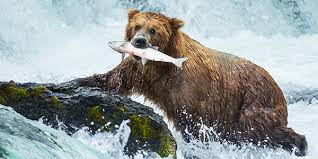
Although it is generally believed that the grizzly bearis a carnivore, grizzly bears, as with most other bearspecies, are in fact omnivoresas the grizzly beardietconsists of both plants and animals. The grizzly bearis most famously known for its love of salmon and can often be seen in large groupsaround the areas where the salmon spawn. The grizzly bearsare still very territorial though but appear to stay out of each others way on these occasions as there is always plenty of fishto go round.

Clancy's comment: Yep, I would love to observe them up close and personal.
I'm ...


Published on June 01, 2018 15:39
May 31, 2018
1 June 2018 - DENNIS DE ROSE - GUEST EDITOR
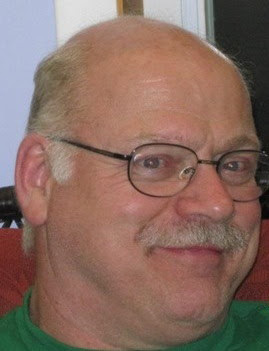
DENNIS DE ROSE - GUEST EDITOR -
G'day folks,
I don't often have the chance to interview editors to find out how they really tick. Well, today is one of those days. This gentleman has edited swags of books so he is worth listening to.
Welcome, Dennis ...
1. TELL US A LITTLE ABOUT YOURSELF AND YOUR EDITING JOURNEY.
I never really counted how many manuscripts I have edited but I’m sure it has to be close to 60 in these last nine plus years. I prefer fiction and have edited: short stories, poetry, historical fiction, romances, adventure, mystery, general, fantasy, philosophical, YA, children’s and others. Nonfiction is something I tend to shy away from unless it’s something I can relate to or find very interesting. I’ve edited a dream diary, an autobiography, a piece on a political ideology and an addiction manual. I also co-authored a book with Julius entitled Jumpstarting Your Inner Novelist, a manual geared toward helping writers over their hurdles. Ghost of Atlanta was the second full-length book I edited and it also won a Gold medal for best fiction in the genre. I have since edited all of Julius’ books and I plan to edit his next one, Stormy Winds.
2. WERE YOU A GOOD READER AS A KID?
I was a slow reader, reading one word at a time but not because I did not know the words. I still read one word at a time but I don’t miss anything, and that’s a good thing.
3. WHEN AND HOW DID YOU BECOME A BOOK EDITOR?
I never wanted to be an editor. It just happened. About 10 years ago, I decided I wanted to help writers by reviewing their books, but I didn’t want to purchase books. I contacted a wonderful lady, Deborah Gaynor, from Kentucky. She had a reviewing service (Readers Favorite) she had started a few years earlier. She accepted me as a reviewer and I began reading an adventure novel. (I edited the next book he wrote and it won a gold medal for best fiction in the category.) When I sent my review to Deborah, she realized it was well written. Apparently, most of the reviews she received needed tweaking. She asked me to do that for her and I accepted the challenge. I tweaked 1000 reviews for her and she agreed to put me on her website as her editor. The first thing I edited in Jan. of 2009 was a children’s story about a horse. I wanted to edit the story for free but the author insisted on paying me. I accepted five dollars as payment and that is how this adventure began.
4. WHY A BOOK EDITOR?
Because I love books, love to read and I enjoy fixing things to make them better than they are. I became a counsellor in a prison to help men fix themselves.

5. WHAT DO YOU ENJOY MOST ABOUT BEING AN EDITOR?
I enjoy helping writers to become better writers, knowing I was able to make their book or books shine like a new penny.
6. WHAT IS THE HARDEST THING ABOUT YOUR JOB?
Having to tell a writer that their manuscript is so poorly written I can’t even understand the first sentence.
7. WHAT WERE YOU IN A PAST LIFE, BEFORE YOU BECAME AN EDITOR?
I was a very handsome boy as you can see and I actually won a baby contest. I grew up surrounded by a loving family and I thank God for that every day. I married a gal from Holland and we have three great kids and now four wonderful bright grandchildren. We worked hard together. And now we are happily retired. I dedicated 35 plus years to the New York State Department of Corrections as a counsellor and made many wonderful friends along the way.
8. WHAT ARE SOME OF THE BEST BOOKS YOU HAVE EDITED? WHY?
I cannot pick a best book but my relationship with the writer has a lot to do with how much I like the subject matter. I recently finished editing Wish You Were Here, Badfinger: A Rock Fantasy written by Joyce Isaacson. At first I was a bit put off by what I was getting into. During the course of the edit and our back-and-forth communication, I changed my mind and now I love the book.
9. WHAT ARE YOU READING AT THE MOMENT?
I am reading a book entitled Complicity written by L. Dalton White, an Indy who lives in Germany. It makes me feel good knowing that we hit it off while talking over the phone and via email. I read and review books by Indy writers only because I believe they put their hearts into their work. I have seen it time and time again.
10. WHAT INSPIRES YOU AS AN EDITOR?
I love what I do knowing I am doing my best still to help others succeed. My family inspires me because they appreciate what I do and they know why I do it, what drives me. The memory of my Mom and my Dad because I know how happy I made them after I edited my first book and it won a gold award for best fiction. I will always try my best to DO THE RIGHT THING!

11. WHAT GENRE’ DO YOU PREFER TO EDIT? WHY?
I prefer fiction in any genre, but I love: adventure, mystery and fantasy. I will no longer edit poetry, or any nonfiction that I am not familiar with.
12. DO YOU HAVE ANY TIPS FOR NEW WRITERS?
a) Take your time. Do not rush the process. I believe the slow turtle wins the race.
b) Have your manuscript read by several readers, not just family, and listen to what they have to say.
c) Join writers groups on Face Book and LinkedIn. Let those writers help you to write better.
d) Go online and read tons of writing how to’s and spend a few dollars for a few good writing manuals. You might be able to pick up a used copy of A Pocket Style Manual 6th ed. written by Hacker and Sommers for as little as 50 cents at your library’s used bookstore.
13. DO YOU HAVE A PREFERRED TIME TO EDIT?
Since I edit part-time, about 3 to 4 hours a day, sometimes less, time is no longer a factor. I retired 5 years ago and my wife lives to shop, so I do a lot of editing when she is not around. As I work on this she is out and about, probably at Sam’s Club or another favourite place, Kohl’s. But I really can’t edit early in the morning. I need to be alert and fit as a fiddle.
14. DO YOU HAVE A FAVOURITE PLACE TO WORK?
I have a small office upstairs equipped with everything I need, a nice big computer screen, good lighting, my manuals and a good radio/CD player. What more could I want?
15. WHAT IS YOUR GREATEST JOY IN EDITING A MANUSCRIPT?
It’s difficult to pinpoint my greatest joy because there’s much more to editing than just editing a book. I want to be involved in your whole process, from beginning to end. But if I had to pick one thing it would be holding a finished book in my hand knowing that together we crafted something that we can both say is 99.99% perfect as we give each other a big hug while sharing time over a cup of good coffee.
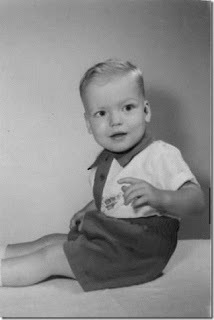
16. WHO IS YOUR FAVOURITE ALL TIME AUTHOR/BEST EXPERIENCE? WHY?
It is difficult for me to pinpoint a best experience because I learn from each writer and hopefully make a new friend/client. It is much easier to recall bad experiences because there have been few over the last nine plus years. I really can’t pick a favourite author, although there are certainly some I like more than others.
17. WHAT’S THE GREATEST COMPLIMENT YOU EVER RECEIVED FROM A WRITER?
For me, the greatest is… I’m really enjoying our time together. What say we continue this for the rest of our lives. And that has happened more than once.
18. WHAT WAS THE WORST COMMENT/EXPERIENCE FROM A WRITER?
I have had two worst experiences and it’s tough to decide which one takes the cake… I don’t believe in contracts. I am old-school, so I believe each party should DO THE RIGHT THING. One client still owes me quite a bit of money after almost eight years. Another berated me for doing a lousy job after his book won a gold medal for best fiction in his genre (if you can figure that one out you’re better than me.).
19. DO SOME OF YOUR CLIENTS FRUSTRATE YOU?
a) When the writer refuses to communicate with me via telephone.
b) We might not be a good fit after we’ve already started working together and I don’t find out until we are heavily into the manuscript..
c) The manuscript is so poorly written that I can’t even understand the first sentence and I have to tell the writer.
d) The writer cannot afford to pay me even after we set up a payment plan and he or she has assured me they would make regular payments.
20. WRITERS ARE SOMETIMES INFLUENCED BY THINGS THAT HAPPEN IN THEIR OWN LIVES. ARE YOU AS AN EDITOR?
1) My 12thgrade English teacher told me I’d never be able to write a poem (I’ve written three so far with a fourth ruminating in my brainpan.)2) My career as a counsellor in a prison helped me to realize the value of paying attention to details.3) My love for reading has always pushed me to question everything, just ask my relatives.
21. OTHER THAN EDITING, WHAT ELSE DO YOU LOVE?
When I am not editing, I am busy promoting myself, creating an all-purpose website, reading and reviewing books, talking to other writers and keeping in touch with my writers/friends. I am retired now so I have a lot of free time. I believe volunteering in your community is a wonderful way to give back so I volunteer at our local library bookstore two days a week. I also love spending time with family and friends, especially camping and traveling. Why not see the world and make a few friends along the way.
22. DO YOU ALSO WRITE?
Actually I enjoy writing. I have written several articles in LinkedIn. You can find them here….https://www.linkedin.com/in/dennis-de-rose-15262917/ I’m also thinking about writing articles for an Israel based blog, Re:Fiction. I just finished writing a piece of flash fiction entitled A Cup of Joe (The Bridge). I am having a tough time finding people that want to read it. It’s just shy of 1000 words. I published it in Inkitt. Here is the link if you care to take a peek… https://www.inkitt.com/stories/other/212643I also co-authored a book entitled Jumpstarting Your Inner Novelist. I wrote three poems, two have been published and I just co-wrote a song that has been jumping around in my brain for many years. It needed to be set free… Gentleman Cowboy. Mike Barnett helped me. He has an FB site, Mike’s Music. You can listen to him about three nights a week.
23. ARE SOME MANUSCRIPTS DIFFICULT TO REVIEW? WHY? If the writer is close-minded, an editor’s job becomes nearly impossible. It’s tough to make any progress if a writer won’t accept changes or constructive criticism. Have you ever read a book that was so poorly written that you couldn’t make heads or tails of it? Imagine what it’s like for an editor. I have had to tell writers to go back to the drawing board (and usually they take my advice). He keeps changing his mind! Mr. Undecided Writer has written a book but he keeps altering the text. Now I have to edit the same thing over and over again as I pull my hair out of my head.
24. WHAT ARE YOUR PLANS FOR THE FUTURE?
About five years ago, I wrote down some funny things my grandson Mikey did while we were camping. I would like to publish The Diary of a Six-Year-Old someday. I think it would be a hit but let’s keep that to ourselves. It’s a secret so SSSHHH! Of course there’s more, I would like to live to be 103. Why, you might ask?
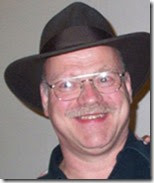
25. ANYTHING YOU’D LIKE TO ADD?
Feel free to email me at DDEROSE@HVC.RR.COM or call me at 01-845-239-4513 and let’s chat a bit. My time is your time. I am here to help you. Check me out here… https://www.linkedin.com/in/dennis-de-rose-15262917/
Thank you so much, Clancy, for giving me this opportunity to toot my own horn. Sadly, most people are willing to take and never give back. You and I have much in common. I take my hat off to you, Sir.
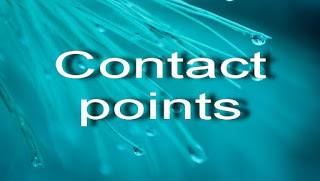
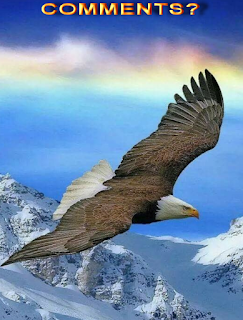
Clancy's comment: Thank you, Dennis. It's been a pleasure. Funny you should mention that idea with your grandson. I'd like to interview kids like Bill Cosby and Art Linkletter did. Kids say amazing things. Good luck, Dennis.
I'm ...
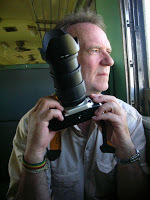

Published on May 31, 2018 16:01
May 30, 2018
31 May 2018 - GREAT QUOTES
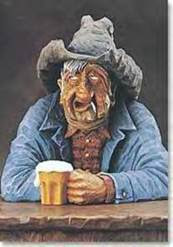
GREAT QUOTES
G'day folks,
Time to be inspired by some great words of wisdom, and a touch of humour.

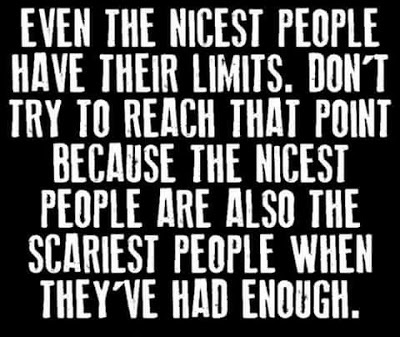





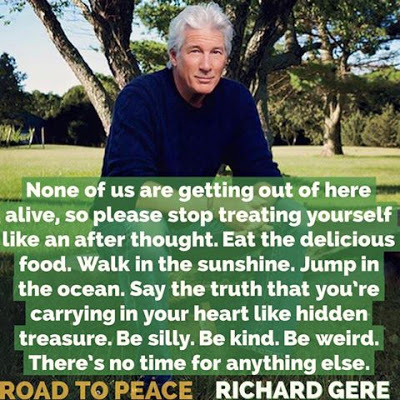



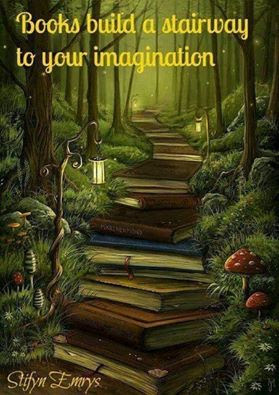

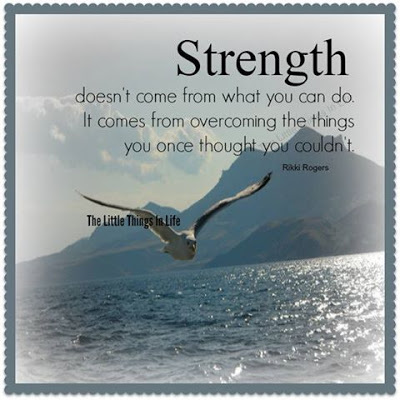





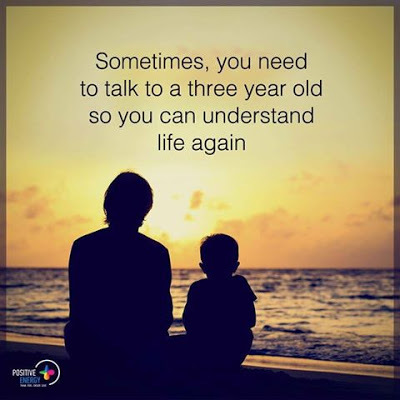
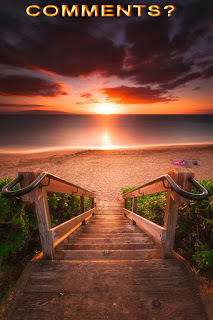
Clancy's comment: Some good ones here today.
I'm ...

Published on May 30, 2018 15:41
May 29, 2018
30 May 2018 - U.S.A - A WALK DOWN MEMORY LANE
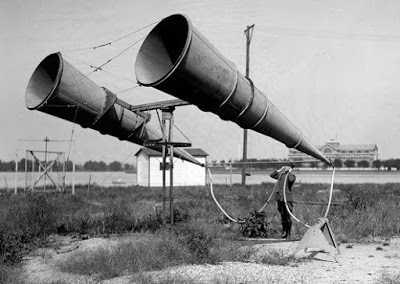
U.S.A.- A WALK DOWN MEMORY LANE -
G'day folks,
Welcome to some more of those stunning old photographs, and famous characters who have since died.

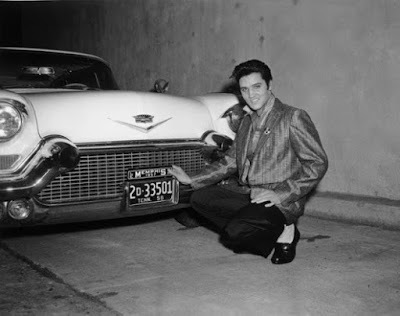



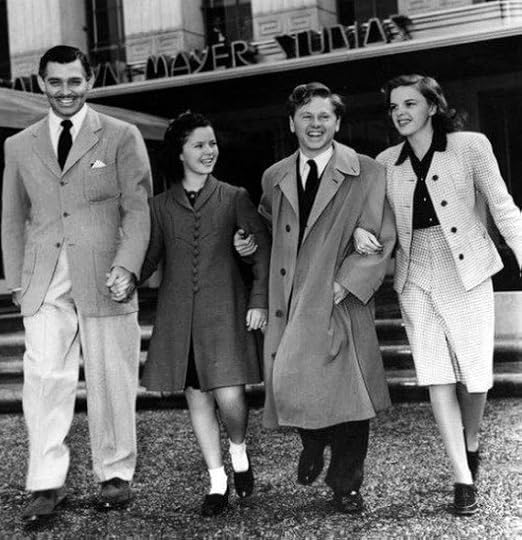

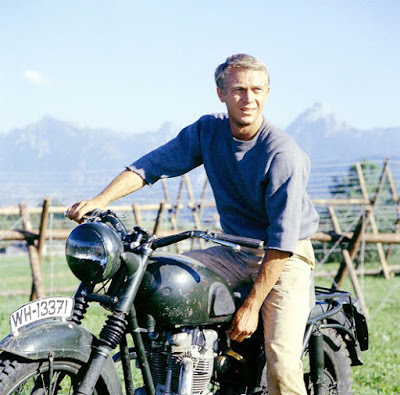
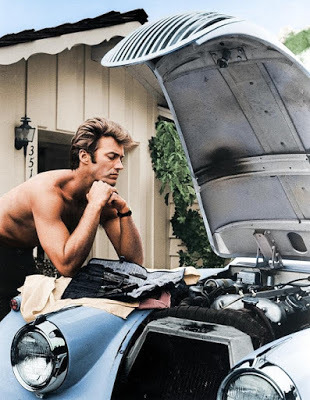
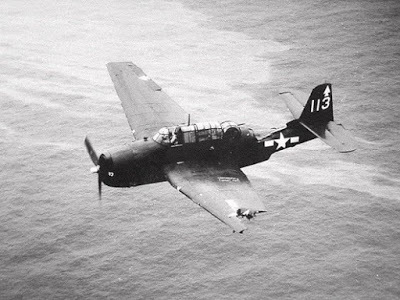
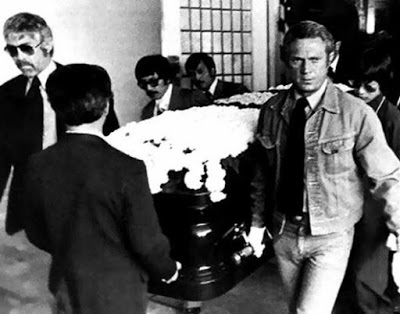


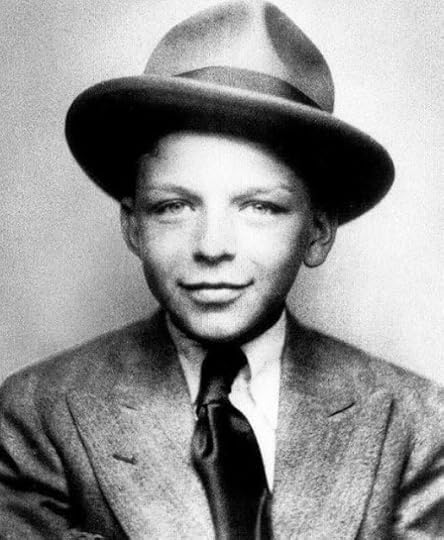
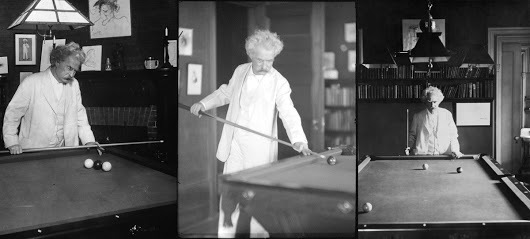

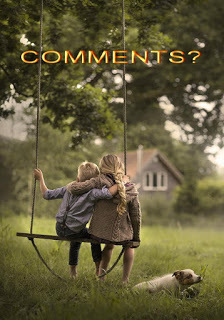
Clancy's comment: I bet you had not seen many of these priceless shots.
I'm ...

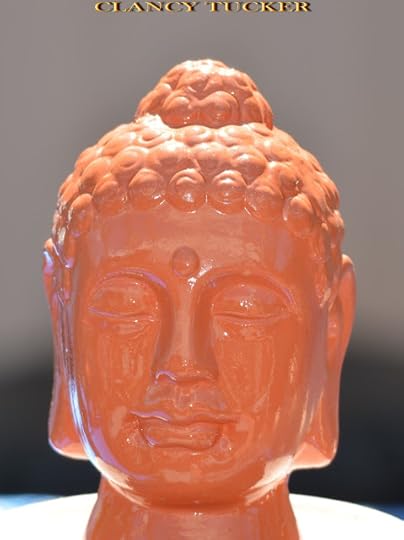
Published on May 29, 2018 14:06
May 28, 2018
29 May 2018 - RANDOM ACTS OF KINDNESS
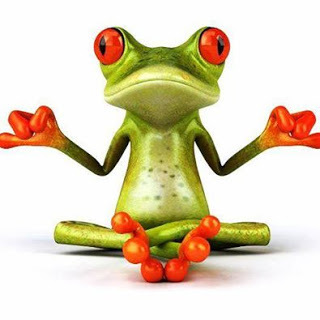
RANDOM ACTS OF KINDNESS
G'day folks,
There are a lot of difficult, tragic things in the world, and unfortunately, they're just a part of the human experience. But what helps counteract the bad parts of life? Random acts of kindness.
These are gestures performed by strangers for no other reason than to be nice - even if that person doesn't get anything nice in return. These are the ultimate signs of selflessness, and they're the kind of thing that can totally turn your day around.



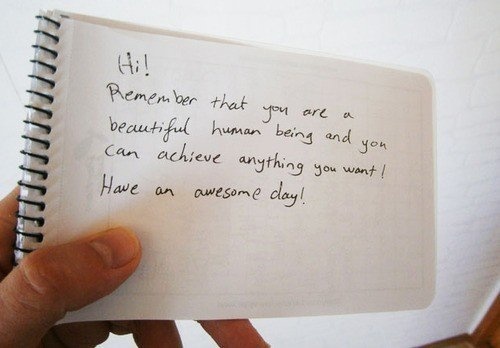


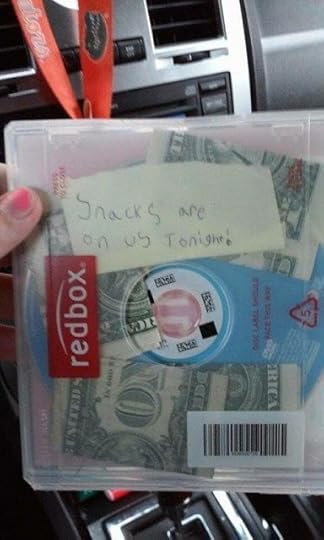

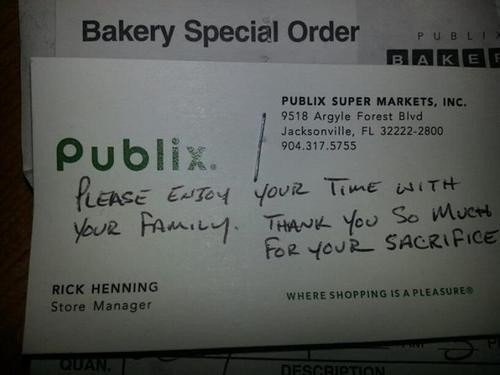




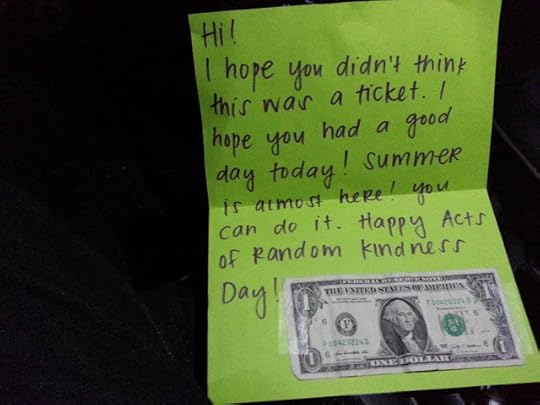

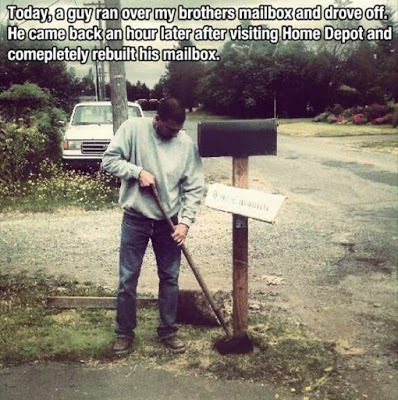
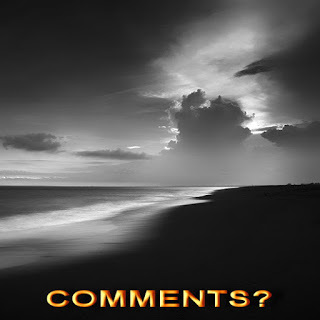
Clancy's comment: Good on them. Love ya work! So, get inspired and do something today.
I'm ...


Published on May 28, 2018 15:51
May 27, 2018
28 May 2018 - THE GREAT WHITE SHARK
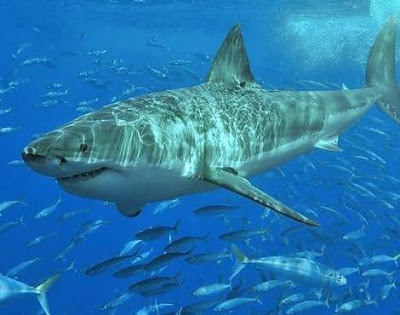
THE GREAT WHITE SHARK
Gday folks,
Welcome to some detailed facts about the greatest fear for surfers in Australian waters. The great white shark, commonly known as the great white or the white shark, is a species of large mackerel shark which can be found in the coastal surface waters of all the major oceans.
The Great White Shark is a large speciesof shark found mainly found inhabiting the temperate and tropical coastal waters worldwide. They are the largest predatory fishspeciesin the world known to grow to lengths of 8 meters or more and weighing over 2 tonnes. Great White Sharks are hugely powerful predatorsthat have developed a fearsome reputation as being one of the most prolific "man-eaters" on the planet, with up to half of annual shark attacks on humansbeing reportedly caused by them. Also known as White Sharks and White PointerSharks, Great White Sharks have been one of the most ruthless oceanpredatory fishes for nearly 20 million years, but despite their high profile reputation, they are actually a lot less common compared to other widely distributed shark species. Although surprisingly little is still known about their biology and population sizes, it is widely agreed within the scientific community that Great White Shark population numbers are decreasing worldwide as they are threatenedby both hunting and habitatloss throughout much of their natural range.
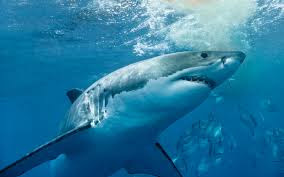
Great White Shark Anatomy and Appearance
Like almost all shark species, Great White Sharks have a highly distinctive appearance with large, torpedo-shaped bodies and a pointed snout. They have very tough skin that is covered in tiny teeth called denticles that is slate-grey to black in colouron the top of their bodies which helps them to remain camouflaged into the rocky, coastal sea floors where they are most commonly found. The underside of the Great White Shark is white and is what has led to their name. Great White Sharks have powerful, crescent-shaped tail fins that help to propel them through the water at a tremendous speed, and are aided by their pectoral (side) fins that are held out in fixed wings to prevent the Great White Shark from sinking. The large and highly characteristic dorsal (back) fin of the Great White Shark is used to help them to steer through the water, along with diving and helping them to balance. One of the most characteristic features of the Great White Shark is their jaw. Their mouths are filled with up to 300 serrated, triangular teeth that are arranged in rows and are replaced continuously throughout their lives. Each tooth can grow to around 6cm in length providing Great White Sharks with a formidable bite when they are attacking their prey.
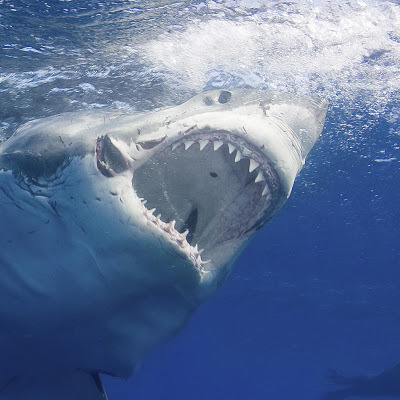
Great White Shark Distribution and Habitat
Great White Sharks are widely distributed around the world, but are most commonly found in temperate and tropical coastal regions but also in cooler waters and open oceantoo. Despite this, they are most commonly seen in South Africa (where there are the biggest population numbers), Australia, California and the northeast of the United States but are also known to range into cooler regions and visit tropical islandsincluding Hawaii and the Seychelles in areas within a greater expanse of open water. Great White Sharks are found swimming either below the surface or just off the oceanfloor depending on the region and their feeding habits. Their coastal dwelling nature is largely attributed to their preyspeciesbut they are also known to travel vast distances through the oceanfrom South Africa to Australiaand from the Californian coast to Hawaii in the deep Pacific.
Great White Shark Behaviour and Lifestyle
Great White Sharks are largely solitary animalsthat only tend to come together to mate but have been seen in pairs or small groupsaround large carcasses. They are highly adaptable and powerful predatorsthat rely less on their eyesight and more on other senses in orderto detect their prey. When in the open oceansGreat White Sharks must swim constantly or they will simply drown. During swimming, sea water is forced into their mouths and over their gillswhere oxygen is then taken in. Great White Sharks swim in an "s" shape in orderto move through the water more efficiently. By flexing their body and moving their incredibly strong tail fins from side to side they are able to travel vast distances. Powerful and more sudden movements of their tail fins enable Great White Sharks to make high-speed dashes when chasing fast moving preyand have even been commonly seen leaping out (breaching) of the water in a similar way to whales when they are attacking their preyfrom underneath.
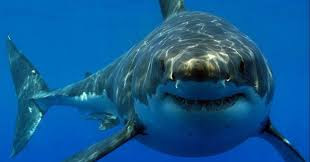
Great White Shark Reproductionand Life Cycles
Like many other shark species, female Great White Sharks give birth to live young rather than laying eggs. The female Great White Sharks (which are bigger than the males) are thought to reach reproductive age at around the age of 17. After an estimated incubation period of between 12 and 18 months, the female gives birth to between 4 and 14 pups that are roughly 1.2 meters long (or more) at birth. Great White Shark young hatch inside the uterusand are thought to gain their nourishment from eating unfertilised eggs and other embryosuntil they have developed enough to be born. Female Great White Sharks are thought to have new litters every 2 or 3 years, normally in warm coastal regions where the young have safe nursery grounds in which to grow. However, many of these areas are being threatenedby habitatdegradation and humaninterferences to keep Great White Sharks away from regions where people commonly surf and swim.
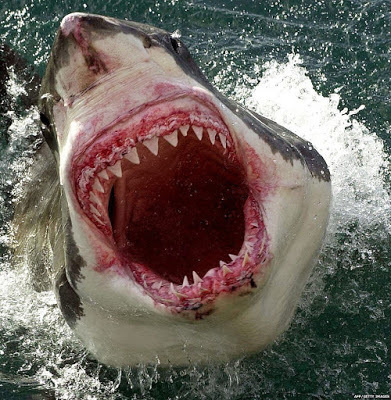
Great White Shark Diet and Prey
Great White Sharks are fearsome carnivoresthat primarily hunt large marine mammalsin orderto gain their nutrition. Seals, sea lions, porpoises, dolphinsand smaller whales are among their most commonly hunted preyspeciesaround the world. Great White Sharks have poor eyesight in comparison to their other senses and use both their sense of smell and ability to detect vibrations caused by animalsin the water to detect their prey. Once located, Great White Sharks fiercely attack with great speed and force before retreating and leaving their wounded preyto weaken before returning to feed once it is safe to do so. Although they are largely solitary, Great White Sharks can be seen in pairs or small groupsto feed on a large whale carcass. In these circumstances, larger and more dominant individuals feed first with varying swimming display patterns thought to contribute to establishing their dominance hierarchy.
Great White Shark Predatorsand Threats
The Great White Shark is the largest predatory fishin the oceanand one of the most formidable aquatic hunters in the world and so naturally, very few animalswould preyupon fully grown Great White Sharks. The smaller and more vulnerablejuveniles however, are more threatenedby large oceanpredatorsincluding Killer Whales and other shark species. The biggest threats to global populations of Great White Sharks are those caused by people. Great Whites are hunted for their jaws, teeth and fins by fishermen and trophy hunters and are also sometimes accidentally caught in nets fishing for other speciessuch as Tuna. Beaches that has been meshed to protect swimmers from shark attacks and habitatdegradation throughout their natural range has also contributed to the global decline in their population numbers.
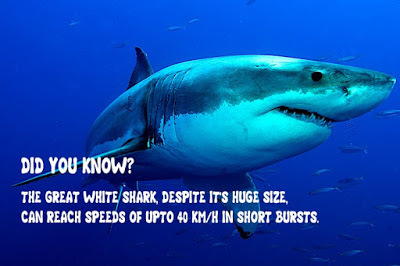
Great White Shark Interesting Facts and Features
Great White Sharks have an exceptional sense of smell which they use to detect prey. Amazingly they are known to be able to sniff out blood in the water from half a kilometre away. Along with other shark species, Great White Sharks have special organsknown as lateral lines (rib-like lines on the sides of their body) which are able to detect the tiny electromagnetic field generated by other animalsin the water, which they use to find prey. Hunting larger preyspeciesmeans that feeding for Great White Sharks can be done more efficiently than if they fed on smaller fishand birds. Great White Sharks are thought to consume an average of 11 tonnes of food every year and after a particularly big feast, may not feed properly again for up to 3 months. In some situations, Great White Sharks have been known to swim along baring their teeth, which is thought to both serve to warn off competitors for food and rival sharks that may be intruding on their personal space.
Great White Shark Relationship with Humans
Humans have a long established negative relationship with Great White Sharks all around the world, as they are responsible for the majority of all shark attacks on people. Despite the fact that such attacks are widely documented in the news, fatalities from Great White Shark attacks are thought to be less common than those caused by lightning strikes or bee stings. Due to the way in which Great White Sharks hunt (known as sample biting where they first attack their preyto wound it before later returning to eat), it is widely believed that people are not considered to be a desirable meal for them as such instances of return are incredibly rare. The high profile nature of these attacks though has led to Great White Sharks developing a reputation of being fierce man-hunters when in actual fact, they have simply mistaken a person swimming or surfing for a sealon the surface of the water. Great White Sharks have also been known to bite or repeatedly bash small boats with their snouts and can cause enough damage to make them to sink.
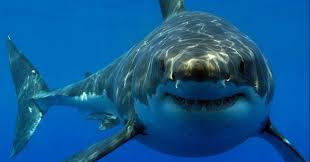
Great White Shark Conservation Statusand Life Today
Although little is known about the exact global population numbers of Great White Sharks, particularly in regions where they are less common, their numbers are thought to have been declining rapidly over recent years. Great White Sharks are now listed by the IUCN as an animalthat is Vulnerablein their native environmentsand they are more also more heavily protected in certain areas. Hunting, habitatdegradation and campaigns to kill Great White Sharks after there has been a high profile attack documented in the media have all led to their population declines, along with the capture of them to be exhibited in aquariums around the world.

Clancy's comment: Ferocious when angry or hungry. But, don't forget that not all sharks live in the sea. Some have two legs and walk the earth.
I'm ...
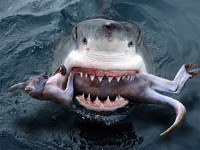

Published on May 27, 2018 14:43
May 26, 2018
27 May 2018 - PIGCASSO THE ARTIST PIG
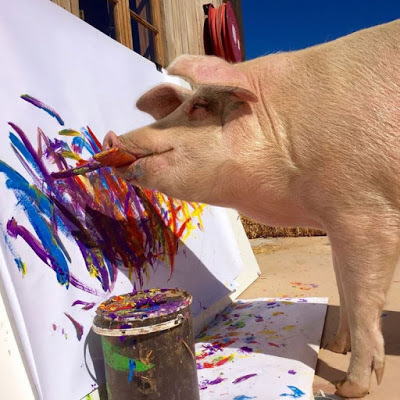
PIGCASSO THE ARTIST PIG
G'day folks,
You are not going to believe this, but there is a video to go with this post. Brace yourself.
If you ever find yourself having to convince someone that anything is possible, just tell them about a Pigcasso, a 450 pound (204 kg) pig who, after being rescued from a South African slaughterhouse at four weeks old, went on to become an acclaimed painter.
South African animal-rights activist Joanne Lefson adopted Pigcasso after rescuing her from a grim fate at the slaughterhouse, a couple of years ago. She took the animal back to her farm and offered her a variety of toys to keep her entertained. Among those toys were some paintbrushes, and the pig became so fascinated with them that she ignored all her other toys. Lefson decided to leave out some paint and canvas as well to see what the animal would do. Believe it or not, she started painting.
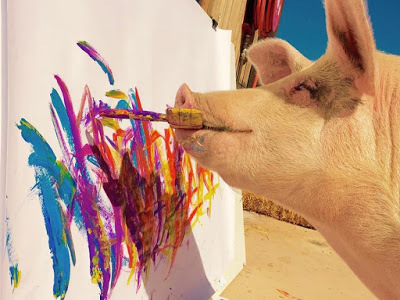
Pigcasso loves dipping the brush in paint and dragging it across the canvas. She has shown such passion and talent that she now has a personal gallery at the animal rescue farm that has become her home. But with art collectors paying up to $2,000 to get their hands on an original Pigcasso, adding new artworks to her collection has become quite difficult.
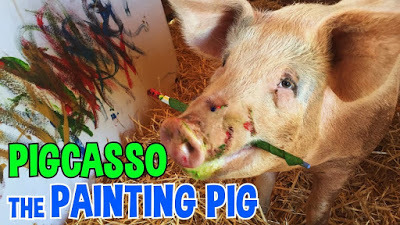
“I do not force her to paint. She paints when she wants to,’’ Lefson told Caters News . “Often, we pack an overloaded picnic basket and she pigs out on organic strawberries, guavas, and caramel-coated popcorn in between brush strokes. For Pigcasso, it’s simply hog heaven.’’
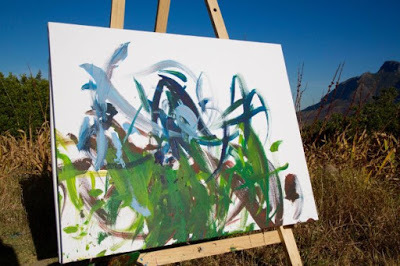
Pigs are curious animals that are keen on exploration. In a domestic setting, they need some form of enrichment, such as tricks or toys, to keep them from getting bored. Bored animals can quickly become unhappy and destructive. Balls are the most common entertainment for pigs, as well as dog tricks like sitting or responding to their name. Painting, however, is a new one altogether. Pigs, like many other animals, are dichromats, meaning that they only have two types of light-receiving cones in their eyes (humans are trichromats).
Although they aren’t precisely colorblind, they cannot perceive the color red and can see fewer shades of green and blue than humans can.
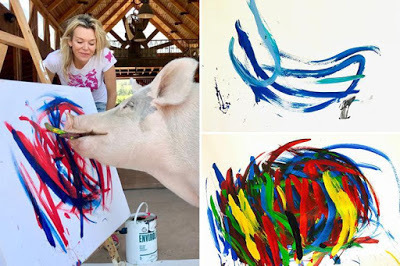
Right now, Pigcasso is the world’s only known painting pig. Lefson is hoping that her pet’s notoriety as an accomplished artist will convince more people that pigs are “amazingly intelligent, exceptional animals’’ that deserve a better fate than the slaughterhouse. She is hoping that “the finest galleries in New York and Paris’’ might one day exhibit her protégé’s art.
Now, check out the video of this master ...
YOUTUBE VIDEO

Clancy's comment: And, you thought I was kidding. Oh ye of little faith.
I'm ...


Published on May 26, 2018 16:23
May 25, 2018
26 May 2018 - THE LONELIEST TREE ON EARTH
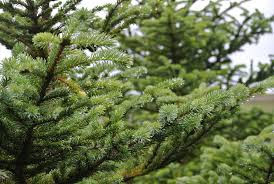
THE LONELIEST TREE ON EARTH
G'day folks,
Picea sitchensis, the Sitka spruce, is a large, coniferous, evergreen tree growing to almost 100 m tall, with a trunk diameter at breast height that can exceed 5 m.
According to the Guinness Book of World Records, a Sitka Spruce growing on New Zealand’s southernmost subarctic island, is the loneliest and most remote tree on Earth. Not only is it the only tree on Campbell Island, but the nearest other tree can be found over 200 kilometers away, on the Auckland Islands.

Located about 700 km south of Bluff, Campbell Island is one of the harshest places in the world. With strong winds blowing almost all year round, less than 600 hours of sunshine and only 40 days per year without rain, it’s not exactly an ideal place to live, which is probably why, except for occasional visits by research scientists, it has remained deserted for over half a century. Trees aren’t supposed to be growing here either, a fact made evident by the wind-tolerant shrubs and grasses covering the island, which only makes the thriving “loneliest tree on Earth” so much more impressive.

It is believed that the Sitka Spruce thriving on Campbell Island was planted by the eccentric Lord Ranfurly, a former governor of New Zealand, sometime between 1901 and 1907. It’s not clear why he decided to plant here of all places, but according to some sources, he lamented that the island was not in productive use, and took the first step to cover it in productive forestry. His idea was never going to work due to the harsh climate of the area, but somehow the Sitka Spruce not only survived for more than a century, but actually thrived.
Apart from its reputation as the loneliest tree on Earth, the Sitka Spruce of Campbell Island has a series of other particularities. First of all its shape makes it look more like a giant cauliflower than a tree. This is believed to have been caused by the repeated chopping of its trunk every year, for decades.
You see, before 1958, when the remote meteorologic station on Campbell Island became fully automated, the staff stationed here would cut the top of the Sitka Spruce every Christams and haul it back to the station to use as a Christmas tree. But it somehow survived this yearly maiming, adapting its shape in the process. Luckily, no one has been cutting the tree down over the last six decades and it has grown to a height of over 10 meters.

Another fascinating thing about the world’s loneliest tree is that, despite being over 100 years old, it has never produced cones, which scientists claim suggests the tree has remained in a permanently juvenile state.
The Sitka Spruce of Campbell Island was recently in the news for helping researchers confirm that the Earth has entered an entirely new geological epoch, the Anthropocene. They found a radiocarbon spike, also known as a “golden spike”, in a sample collected from the core of the tree, which they say confirms our world has entered a whole new epoch.

Who knew a lonely tree growing 200 km away from its nearest cousins could be so interesting?

Clancy's comment: Another story of survival, eh?
I'm ...

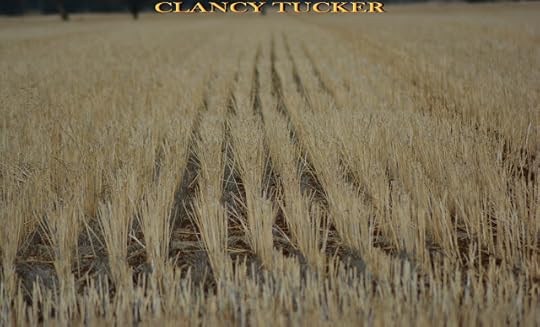
Published on May 25, 2018 16:39
May 24, 2018
25 May 2018 - WEIRD AND WONDERFUL

WEIRD AND WONDERFUL
G'day folks,
Sit back and enjoy some weird and wonderful photographs.

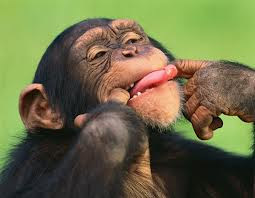
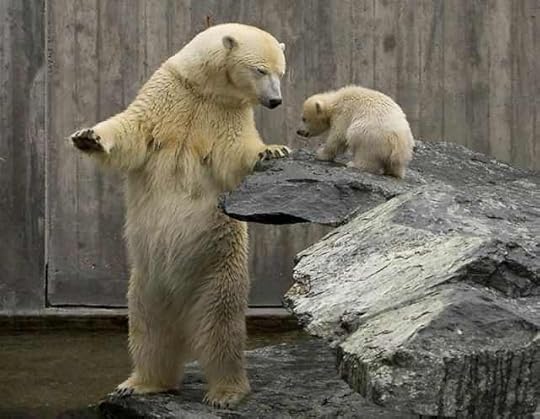
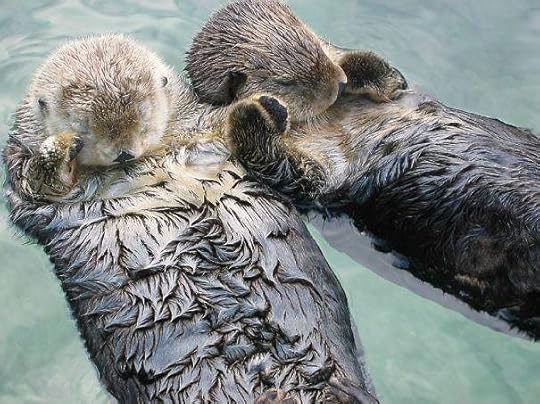


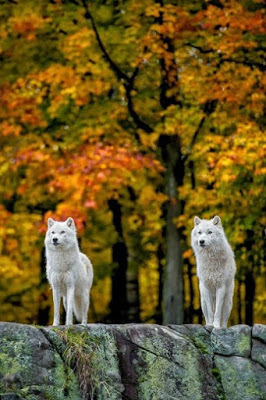
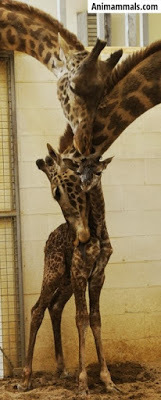


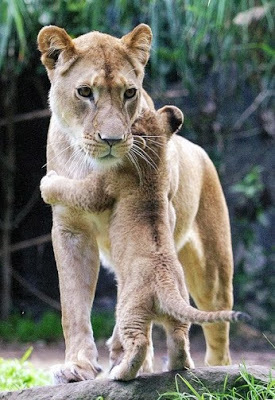

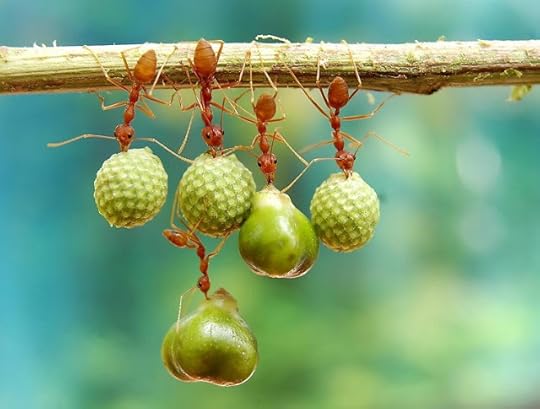
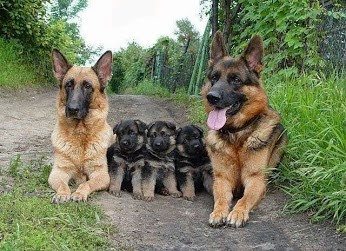
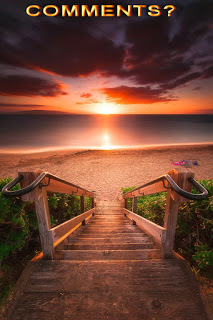
Clancy's comment: Yep, it's all about being there at the right time ... And pressing the button.
I'm ...
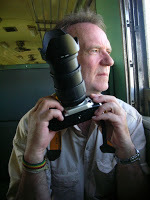
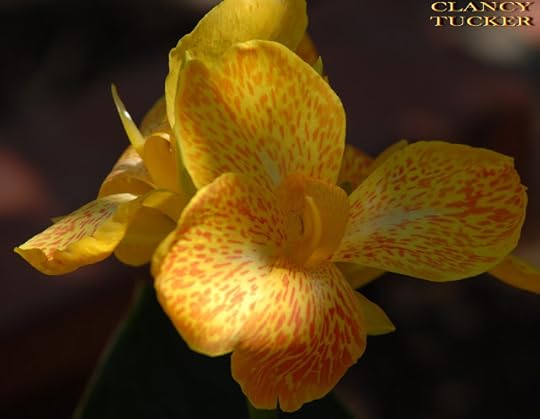
Published on May 24, 2018 15:45
May 23, 2018
24 May 2018 - JOAN K. LACY - GUEST AUTHOR
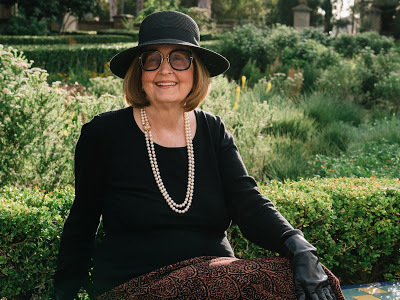
JOAN K. LACY - GUEST AUTHOR -
G'day folks,
Today, I interview another inspiring author from the USA.
Welcome, Joan ...
PREAMBLE:
I grew up in the country, surrounded by animals of all kinds, tame and wild. Over the years I've come to appreciate their intelligence and sensitivity. Animals do have feelings.
I always loved an adventure, and my dad loved to travel. Every year he took us somewhere new for the holidays. His curiosity about the world and love of travel rubbed off on me, and I developed a love for travel, too. From my home in San Diego, I've been around the world as far as Istanbul travelling east, and to Sydney travelling west. I studied five languages, lived in Europe—best year ever—and have visited or lived in nearly every one of the United States.
Writing came to me later in life, but it gives me the opportunity to write about all the things I learned. At first, writing was an escape from a difficult situation, but then the adventures filled my imagination, and the characters took on lives of their own. I listened to what they had to say, and sometimes I could hardly type fast enough to keep up with the dialogue and the action. It's a lot of fun.
1. Tell us about you and what you do.
I was adventurous growing up in the country (there's less of it now) near San Diego. I loved studying foreign languages and traveling when I was younger, now I prefer to stay home with all my favourite hobbies, like sculpting animal portraits, playing 3-finger bluegrass banjo, learning bossa nova guitar, and spinning alpaca fibre into items for the VA hospital. Writing came into my life late, but I took to it readily. I enjoy research, and an active imagination keep story ideas flowing.
2. What was the happiest moment of your life?
I've had so many. I've tried to answer that question, but I find that every day I look for something to be happy about. And there's always something!
3. What was the saddest moment?When my pets die.
4. What surprised you most?During a drought in Southern California, I discovered that 'we, the people', denigrated by some politicians, are for the most part actually quite intelligent and responsible.
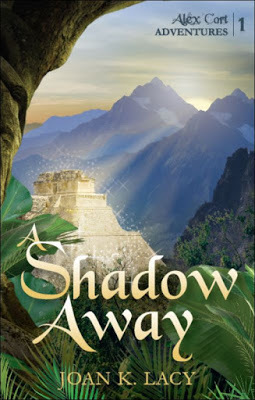
5. What was your greatest disappointment?I was young, and the young man was probably new at the time, but it happened when I found out 'professionals' don't always know their jobs. I've since learned that everyone is doing the best they can at that moment, even if it's not what I expect from them.
6. What or who was your biggest challenge?I must thank my parents for believing in me. They always told me I could accomplish whatever I set out to do. I did, and I do!
7. What has been your biggest regret?I feel badly when my words aren't taken in the way I meant them, or I didn't say what I meant. I wish I could have expressed myself better or more clearly.
8. What would be your dying comment? Why?I would tell whoever is with me, "I love you." They'll know why.
9. Who or what stunned you the most?I am continually amazed by the beauty of our world, the wonderful and surprising behaviour of animals, and the amazing colourful birds and fish who share this Earth.
There were two instances, especially, that touched my heart. A Snow Monkey in a snowstorm, rubbing her hands to warm them, just as we would do. Then, an outcast Capuchin monkey making conciliatory gestures, begging for mercy, from a spiteful superior after a fight.
10. What would you like written on your tombstone? Why?Auntie Mame said this, and it's been my motto through life: "Life is a banquet, and most poor fools are starving to death." A reminder to live every day to its fullest.

11. Who would you rather have not met? Why?People I wish to avoid are usually the ones I have the most to learn from. Everyone has something to teach me, usually about myself.
12. Who were you most envious of?No need for envy. This planet supplies us with everything we need. There is enough for everyone, if selfishness and greed were replaced by good will and a generous spirit.
13. Who did you forgive – for doing something you never thought you’d forgive?I was mad at my father for years. Don't know exactly why. Probably because we were too much alike. Then, over time, I realized all the generous gifts my sister and I received from him: A positive outlook on life, the magical childhood I didn't appreciate until I left for college, then the realization that he did the best he knew how, and that he loved us even though he didn't know how to say it with words.
14. What was your greatest moment in your life?I must say I've enjoyed all of my life. All the happy moments, and what I learned from the unhappy ones that helped me grow.
15. What is your greatest achievement?I've had the pleasure of many achievements in my life. I started to write them down, but so many images popped up in my mind I gave up.
My favourite achievements are these:
Writing the first three stories of adventure and magic in a series called "Alex Cort Adventures" has been a lot of fun. Alex is basically me, with a curiosity about this world. He's not afraid of taking chances, though magic is a mystery to him (not to me). Andrew Seaton is an eccentric archaeologist who gives me the opportunity to share what I've learned about archaeology, from science to superstition. With Angelise, a young woman with her own kind of magic, I can write about supernatural mysteries linked with ancient myths and legends around the world. The first book, A Shadow Away, is due out May 15th. If you would like to contact me and read about the series, my web address is joanklacy.com.
I also started a weekly blog on my Profile Page at LinkedIn, and on Facebook. Come join me. I'll be happy to receive your input and comments to posts about my experiences with the process of writing from start to publish, and any other topics we find interesting.
I enjoy speaking foreign languages, and studied five: French, Spanish, Italian, German, and Swedish. I sculpt bas-relief portraits of exotic and domestic animals. I learned to play the violin, then Irish fiddle (Same instrument, different attitude!). I love playing bossa nova guitar, and 3-finger style bluegrass banjo.
16. What personal traits would you like to have in your next life?I'm already working on those: Kindness, patience, compassion.
17. What advice would you give to world leaders? If they would listen, I'd ask them to use their common sense.
18. What advice would you give to parents today?Give your children your time. Let them know they are loved. Give them a sense of self-confidence, so they have faith in themselves.
19. Who would you choose to be stuck on a desert island with?Someone who has travelled widely, read extensively, and brought a truckload of books!

20. Have any heroes? Who?First responders. Every person who helps others in times of disaster. Those people who give animals in need a loving home.
21. What are the greatest legacies you will leave behind?I have a body of artwork, sculpture, paintings, and drawings I'm very proud of.
I hope my stories will bring the fun of adventure and magic to others, and that they enjoy reading them as much as I did writing them.
I hope I have touched some people's lives.
22. What’s lacking in the world today?Time for leisure that modern conveniences were supposed to provide.
23. Any pearls of wisdom for the rest of us?I believe everyone knows in his heart what's best for them.
24. What would be the last sentence you ever write?I will probably write until someone takes the mouse away from me.
25. What inspires you most?Wild and domestic animals with their whimsical, philosophical, or intelligent expressions. They become my subjects for pencil and charcoal drawings, and portrait sculpture.
26. Who or what makes you laugh the most?Clever and witty people.
27. What would be your top three chosen careers in your next life?Personally, I hope I get it right this time, and don't have to come back. But if it's Earth again, I would love to play music seriously, early in life. As for careers, I'm happy with the choices I made in this life.
28. What is your prime focus in life today?To be the best person I can be—so I don't have to come back!
29. Do you have any fear of doing something wrong?When I was learning to ski, a friend told me, "If you don't fall down, you're not trying hard enough." Good advice on many levels.
I believe people find meaning in their lives when they find a purpose in life.
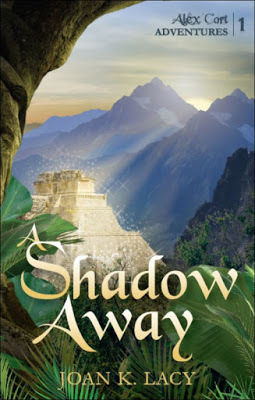
31. From your perspective - what is the way forward for the world?
According to Astrology, we are moving from the Piscean to the Aquarian Age, a period of brotherly love and transparency. It won't happen all at once, and I can't speak for other countries, but here in the United States we see people and communities helping others in distress after earthquake, flood, or fire disasters. And the word "transparency' is being heard more often these days.
The world will be okay, if the human species will stop creating problems.
32. Anything you'd like to add?
When we were young, our dad asked us to wash down the driveway (in the days when saving water wasn't an issue). My sister told me, "Just because it's wet, doesn't mean it's clean." I always thought they were good words to live by. My dad also said, repeatedly, "Any job worth doing is worth doing well."
If you would like to contact me, my website is joanklacy.com. I'd love to hear from you.
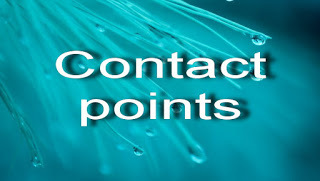
WEBSITE
BLOG
AMAZON

Clancy's comment: Thank you, Joan. I love your website. Looks stunning, and your 'Hummingbirds Bring Good Luck!' blog post is great. Keep writing, and best wishes with book sales.
I'm ...


Published on May 23, 2018 16:11



